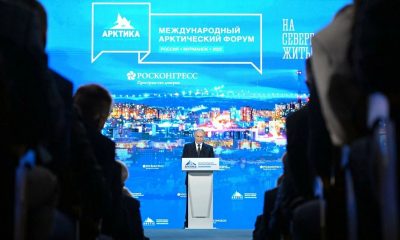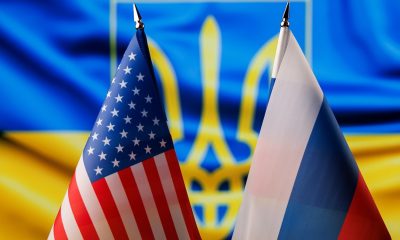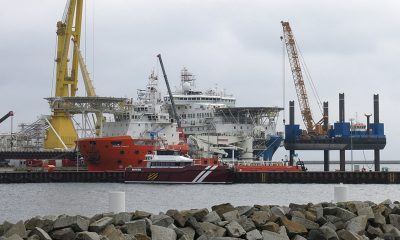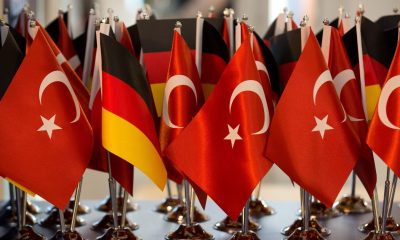RUSSIA
The last major American bank in Russia closes its doors

American CitiBank, one of the largest Western banks in Russia and one of the country’s 20 largest banks by assets, is winding down its operations in Russia.
According to information obtained by Frank Media from CitiBank, the bank’s subsidiary in Russia will close its last retail branch on 15 November.
The branch near the Paveletskaya metro station in the capital Moscow will also close within two months. Citibank advised its customers to “consider other options for making deposits and other transactions”.
All Citibank debit cards will be invalid from 20 September, and money transfers, ATM cash withdrawals and QR code purchases, including through the Central Bank’s Faster Payment System, will be stopped from 25 September.
Citigroup had planned to sell its retail operations in Russia in early 2021, but decided to close them completely following the military intervention in Ukraine.
The volume of loans granted by the bank since the beginning of 2022 has decreased by 98 per cent to 2.4 billion roubles. Of the 154 billion roubles in deposits from individual clients, only 1 billion roubles remained, and the funds held in commercial accounts fell more than 90 times, from 346 billion roubles to 3.8 billion roubles.
Following Citi’s lead, European banks began to close their operations in Russia. Raiffeisenbank, one of the largest, stopped foreign transfers for most of its clients at the end of August.
The total assets of foreign banks in the country at the beginning of this year will be only $66 billion. This is almost half the pre-war level of 2021 ($119 billion) and less than a quarter of the record level of 2012 ($239 billion).
RUSSIA
Putin signals readiness for Arctic cooperation, including with the West

Russian President Vladimir Putin, speaking at the plenary session of the International Arctic Forum in Murmansk on March 27, stated that Russia is ready for cooperation in the Arctic with both friendly nations and, should they express interest, Western countries.
Putin noted that international interaction in the Arctic is not currently experiencing its best period.
The President mentioned that the Arctic Council was previously established for cooperation, but this mechanism “has weakened today.”
“As they say in such cases: If you don’t want to, it’s up to you,” Putin added.
According to the Vedomosti daily, Putin also addressed US President Donald Trump’s idea of purchasing Greenland from Denmark.
According to Putin, “this might only seem surprising at first glance.” He stated it would be incorrect to consider these discussions unusual, adding, “In fact, such plans by the US emerged in the 1860s. At that time, the American administration was considering the possibility of annexing Greenland and Iceland, but this idea did not receive support from Congress.”
Putin then recounted the history of the matter, including the US establishing military bases on the island during World War II and subsequently offering to buy Greenland from Denmark after the war concluded.
According to the President, this issue primarily concerns relations between the US and Denmark and does not involve Russia. However, “the only fact that certainly worries us is that NATO countries are increasingly designating the Far North as a potential springboard for conflicts and are practicing the use of troops under these conditions.”
Furthermore, Putin stated that Russia is not threatening anyone in the Arctic but is establishing a defense line.
He detailed that the Arctic region constitutes more than a quarter of Russia’s territory, is home to approximately 2.5 million Russian citizens, and accounts for 7% of the country’s GDP and about 11% of its exports.
The President highlighted that cargo flow on the Northern Sea Route has increased tenfold over the last decade, rising from 4 million tons in 2014 to approximately 38 million tons in 2024. Projections estimate cargo flow will reach 70-100 million tons by 2030.
Putin emphasized that the primary objective is to transform the Northern Sea Route into a key segment of the Trans-Arctic Transport Corridor, extending from St. Petersburg via Murmansk to Vladivostok.
According to Putin, this route “should connect the world’s industrial, agricultural, energy centers, and consumer markets via a shorter, safer, and economically profitable route.”
Putin outlined several tasks for developing the Trans-Arctic Corridor. Noting that Russia currently possesses the world’s largest icebreaker fleet, he stressed the need to strengthen this position and commission new-generation icebreakers, including nuclear-powered ones currently unique to Russia.
“Four of these—the newest 22220 series—are already operating in the Arctic. Three more nuclear icebreakers of this series are under construction—Chukotka, Leningrad, and Stalingrad—as well as the super-powerful 120-megawatt Rossiya icebreaker,” Putin stated.
He also mentioned Russia’s need for its own merchant fleet, including cargo and emergency rescue vessels, to facilitate transportation in the Arctic.
Observing that current capacity is insufficient, Putin said, “It is necessary to move in all directions: purchase and order ready-made ships, establish cooperation with global manufacturers, and generally align the entire Russian shipbuilding system with upcoming strategic tasks.”
He added that the government should support Russian shipbuilding and repair enterprises and explore the issue of shipyard construction.
Putin also stated that conditions must be created for domestic operators transporting cargo via the Arctic within Russia, adding that Russia is prepared to establish joint ventures in this area.
“International logistics operators can profitably invest in such companies not only with capital and technology but also with a portion of their merchant fleets,” Putin assessed.
Stating that Russia will increase the capacity and turnover of its northern ports, Putin added that Belarus, China, the UAE, and other countries have shown interest in developing the Arctic’s transport infrastructure.
Putin announced that multimodal centers will be established within the framework of the Trans-Arctic Corridor and instructed the government to outline plans for expanding the capacity of Arctic seaports and identify locations for new ones.
He also confirmed that Russia will implement the Arctic Railway Polygon development project: “Today we are aware of the development issues concerning RZD (Russian Railways)… However, it is necessary to start thinking now about this—about what I just mentioned, the development of the Northern Railway.”
RUSSIA
Europe from Lisbon to Vladivostok will revive, Deripaska says

One of Russia’s wealthiest men, Oleg Deripaska, announced his belief that the project to create a unified economic zone between Russia and Europe, stretching from Lisbon to Vladivostok, will be revived.
In a statement on his Telegram channel, Deripaska noted that this project would exclude Britain.
Deripaska stated, “The inevitable rapprochement after the conflict between Russia and Germany will completely change the political map of the European continent and lead to the revival of the project to create an economic zone from Lisbon to Vladivostok. This situation, along with Scotland’s secession from the United Kingdom, will definitively bury the British Empire in history.”
Deripaska stated that Britain’s problems have been accumulating for years, chief among them being “the virtual bankruptcy of public finances” and the complete failure of Brexit hopes.
Deripaska added, “No one came up with the dream of creating a Singapore on the Thames, and there was no desire for it in a society full of leftist ideas and not inclined to meticulous work.”
Deripaska assessed, “The collapse of the legal system and the terrible incompetence of judges in London have virtually destroyed the investment environment, and tax changes for foreigners have completely finished this situation.”
“But the worst is yet to come,” said Deripaska, adding, “All we have to do is wait and ignore the audacious ideas like ‘boots on the field.’ Let them crow a little.”
RUSSIA
Ukraine retreats from most occupied areas in Russia’s Kursk oblast

According to military analysts and soldiers who spoke to The New York Times (NYT), the Ukrainian army has withdrawn from almost all of the territory it occupied in Russia’s Kursk oblast.
As a result of Moscow’s counterattacks, Ukraine’s months-long operation to seize and occupy Russian territory is nearing its end.
At the peak of the offensive, the Ukrainian army controlled approximately 1,295 square kilometers of Russian territory.
According to Pasi Paroinen, a military analyst at the Finland-based Black Bird Group, as of Sunday, the Ukrainian army was trying to hold on to a narrow area of approximately 78 square kilometers along the Russia-Ukraine border.
“The end of the war is coming,” Paroinen told the newspaper.
While the amount of Russian territory under Ukrainian control could not be independently verified, intense fighting was reported in the region.
With Russia’s rapid advance, supported by continuous air strikes and drone attacks, the Ukrainian army withdrew last week from several villages in Kursk oblast and from Sudzha, the main city they controlled.
The General Staff of the Ukrainian Armed Forces announced that the troops had withdrawn to more defensible areas inside Russia and were taking advantage of the rugged terrain to provide better fire control against the approaching Russian forces.
On Sunday, it published a map showing the narrow area that Ukraine still controlled in Kursk oblast.
However, it remains unclear how long the Ukrainian army will be able to hold this area.
Ukrainian soldiers stated that the ongoing fighting in Kursk is no longer about holding Russian territory, but rather about controlling the best defensive positions to prevent the Russians from entering Ukraine’s Sumy oblast and opening a new front in the war.
An assault company commander, who identified himself only by his radio code, Boroda, said in a telephone interview, “We continue to maintain our positions on the Kursk front,” and added: “The only difference is that our positions have moved significantly closer to the border.”
Military experts say that although Ukraine’s withdrawal from most of Kursk oblast was rapid, it came after months of Russian attacks and bombardment that gradually weakened Ukraine’s foothold in the region and cut off supply routes, eventually making withdrawal necessary.
Austrian military analyst Franz-Stefan Gady, who visited Ukraine’s Sumy oblast on the Kursk border last month and met with Ukrainian commanders, said, “What has happened in the last few months was an operation that prepared the conditions for a successful advance.”
Serhiy Kuzan, the head of the non-governmental organization Ukrainian Center for Security and Cooperation, said, “There was no danger of encirclement of Ukrainian troops, and there is no evidence to the contrary.”
Meanwhile, Trump’s special representative for the Middle East and also a mediator with Russia, Steve Witkoff, told CNN on Sunday that he expected Trump to meet with Putin this week.
Witkoff said he had a positive three-to-four-hour meeting with Putin last week. While refraining from sharing the details of their discussions, Witkoff expressed his continued optimism that an agreement could still be reached.
-
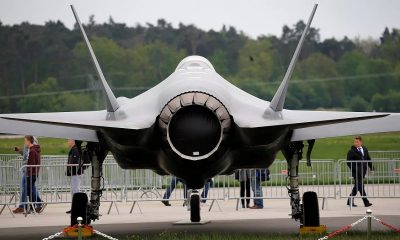
 EUROPE6 days ago
EUROPE6 days agoF-35 debate intensifies across Germany and Europe
-
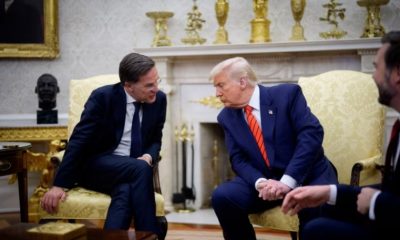
 EUROPE1 week ago
EUROPE1 week agoEurope plans for US absence in NATO with 5-10 year strategy
-

 ASIA2 weeks ago
ASIA2 weeks agoChina’s AsiaInfo expands with DeepSeek-powered AI
-
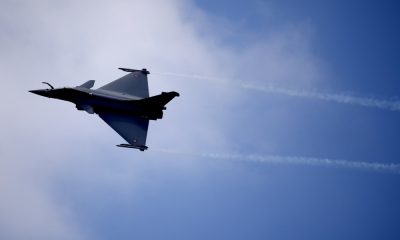
 EUROPE2 weeks ago
EUROPE2 weeks agoFrench defense industry gears up for war amid EU strategic autonomy push
-

 DIPLOMACY7 days ago
DIPLOMACY7 days agoTrump’s proposed fees on Chinese ships threaten US maritime industry
-

 AMERICA2 weeks ago
AMERICA2 weeks agoTrump’s tariffs drive Nvidia to invest heavily in US manufacturing
-

 ASIA6 days ago
ASIA6 days agoBeijing’s energy rules threaten Nvidia H20 chip sales in China
-
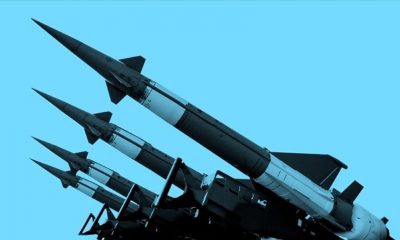
 EUROPE7 days ago
EUROPE7 days agoCalls for German nuclear armament grow louder


